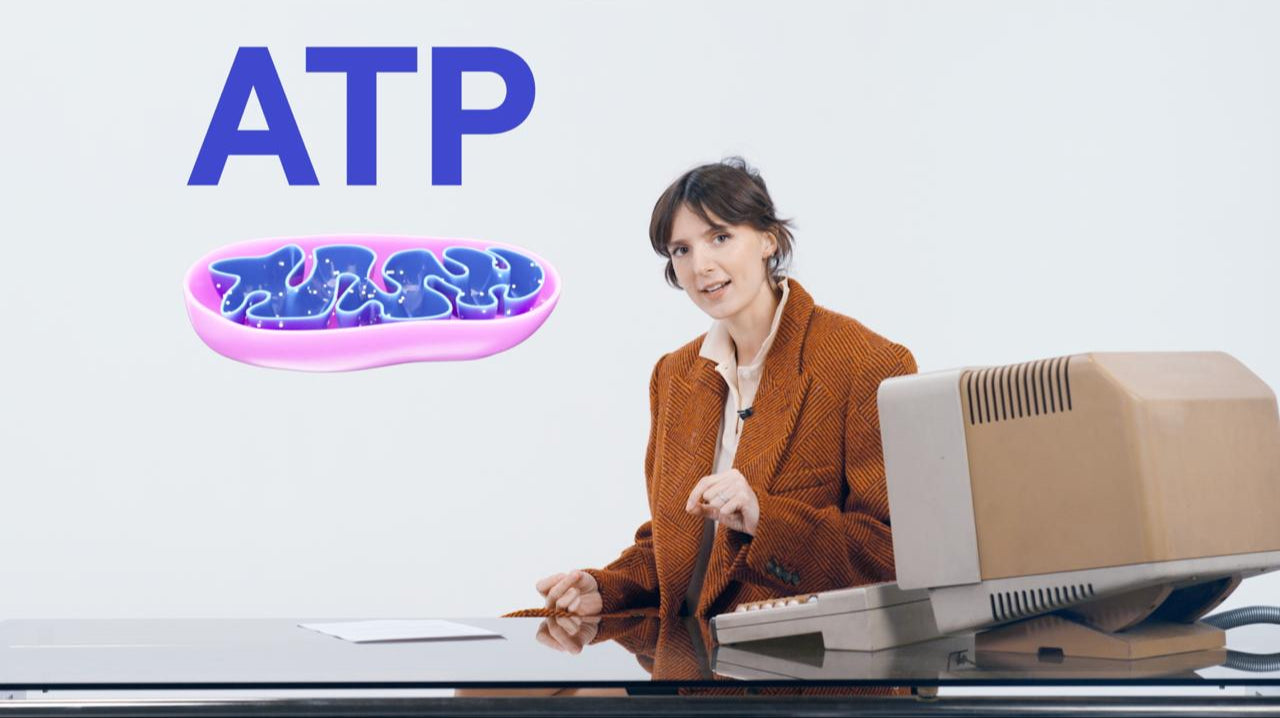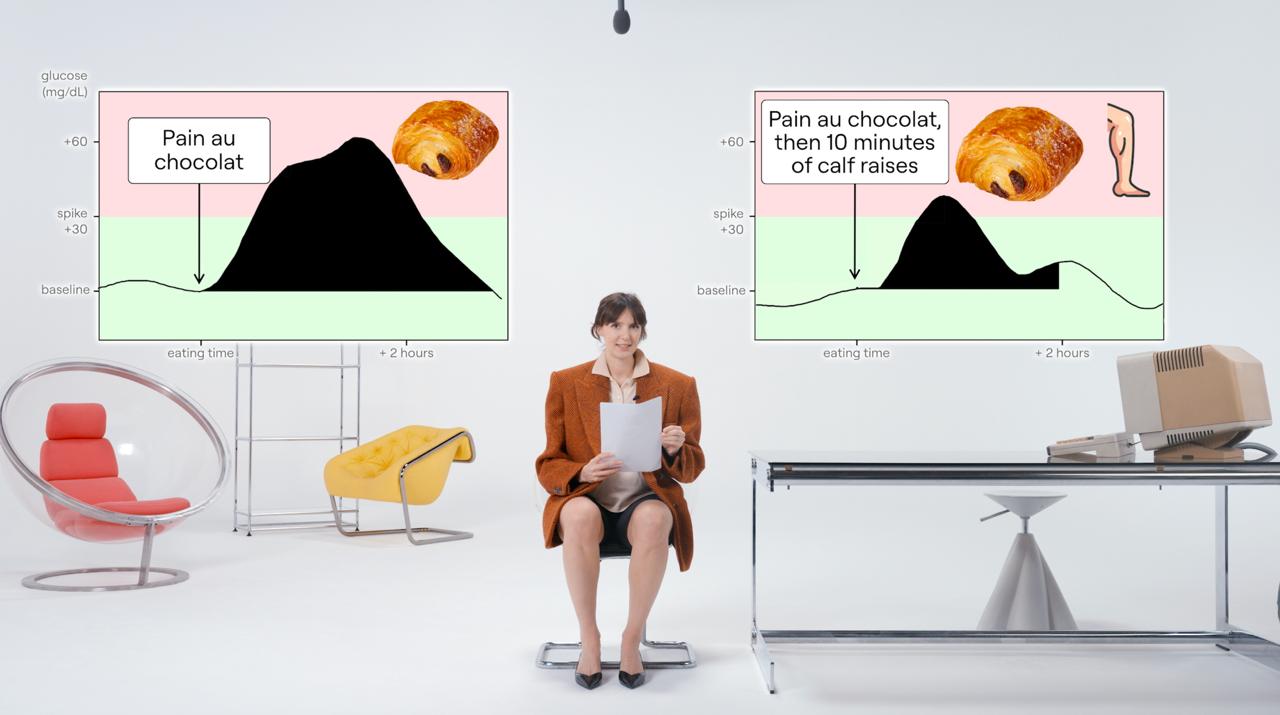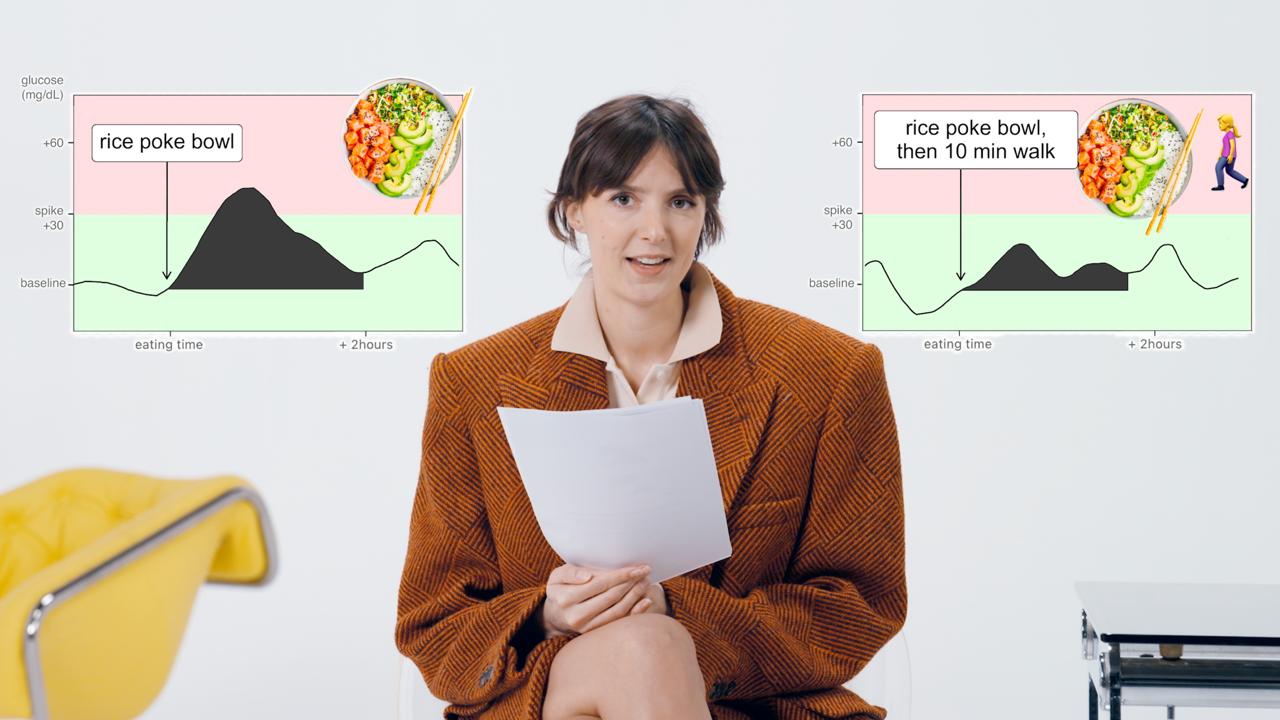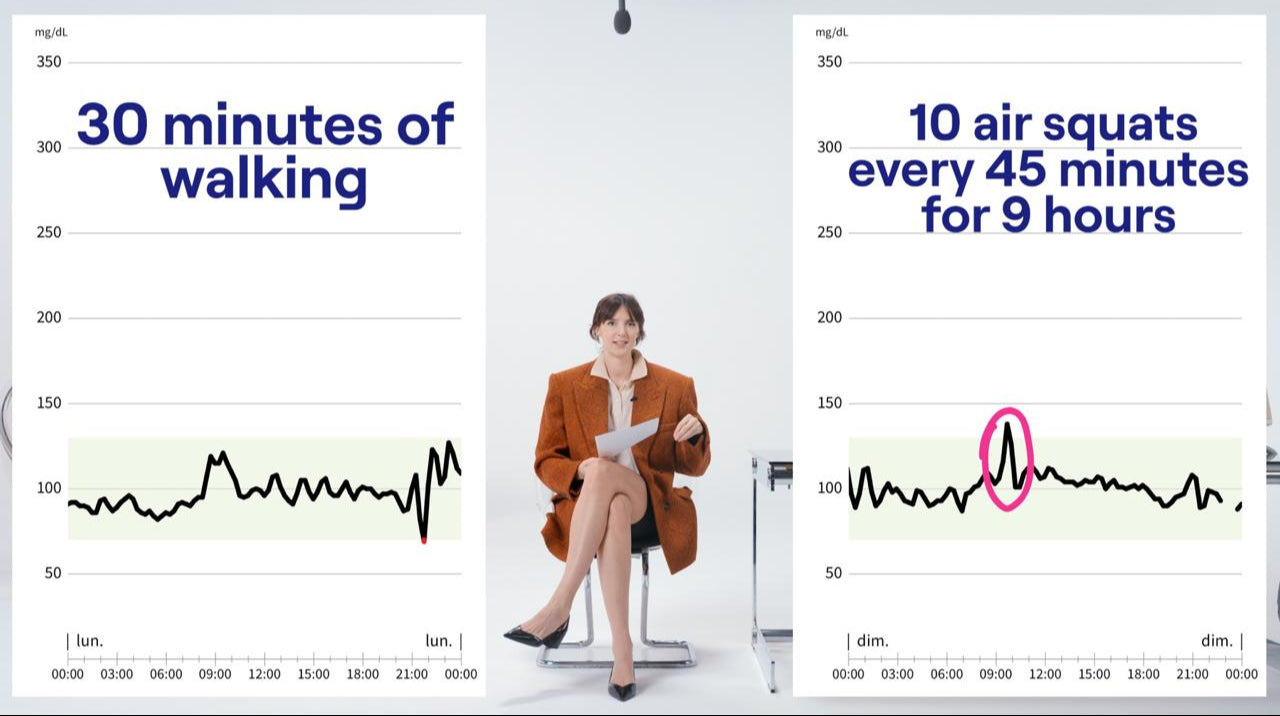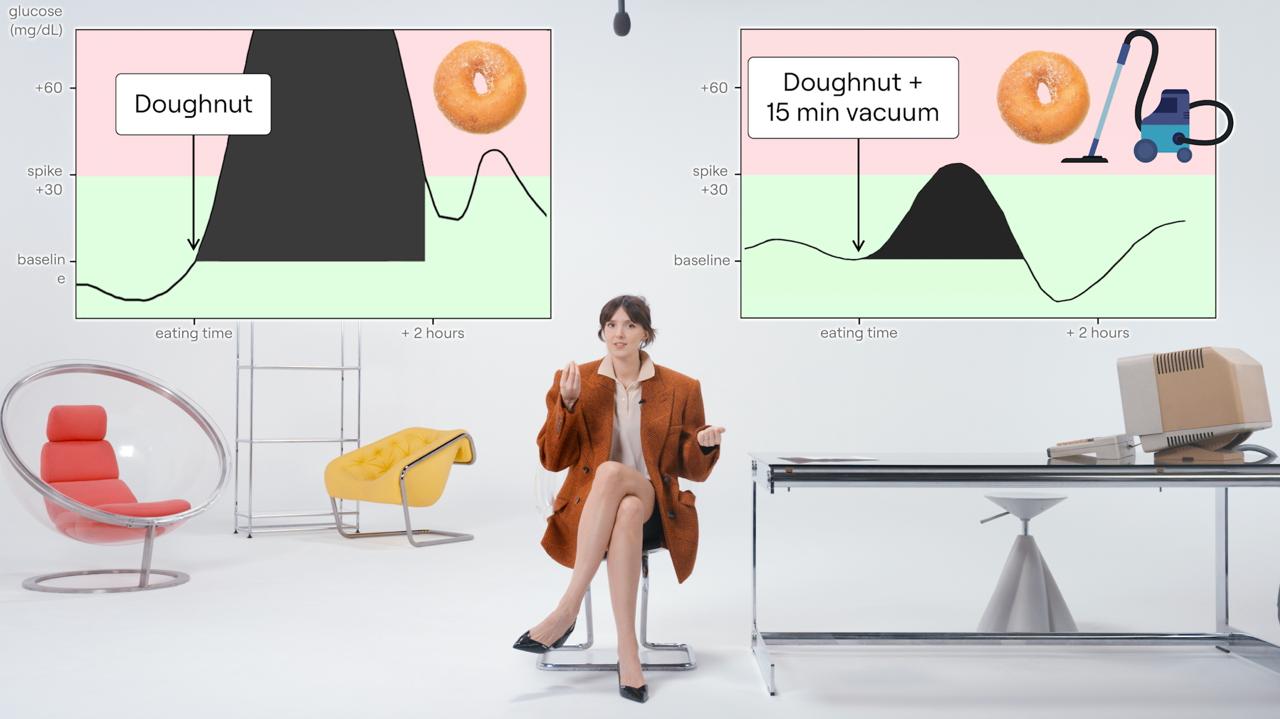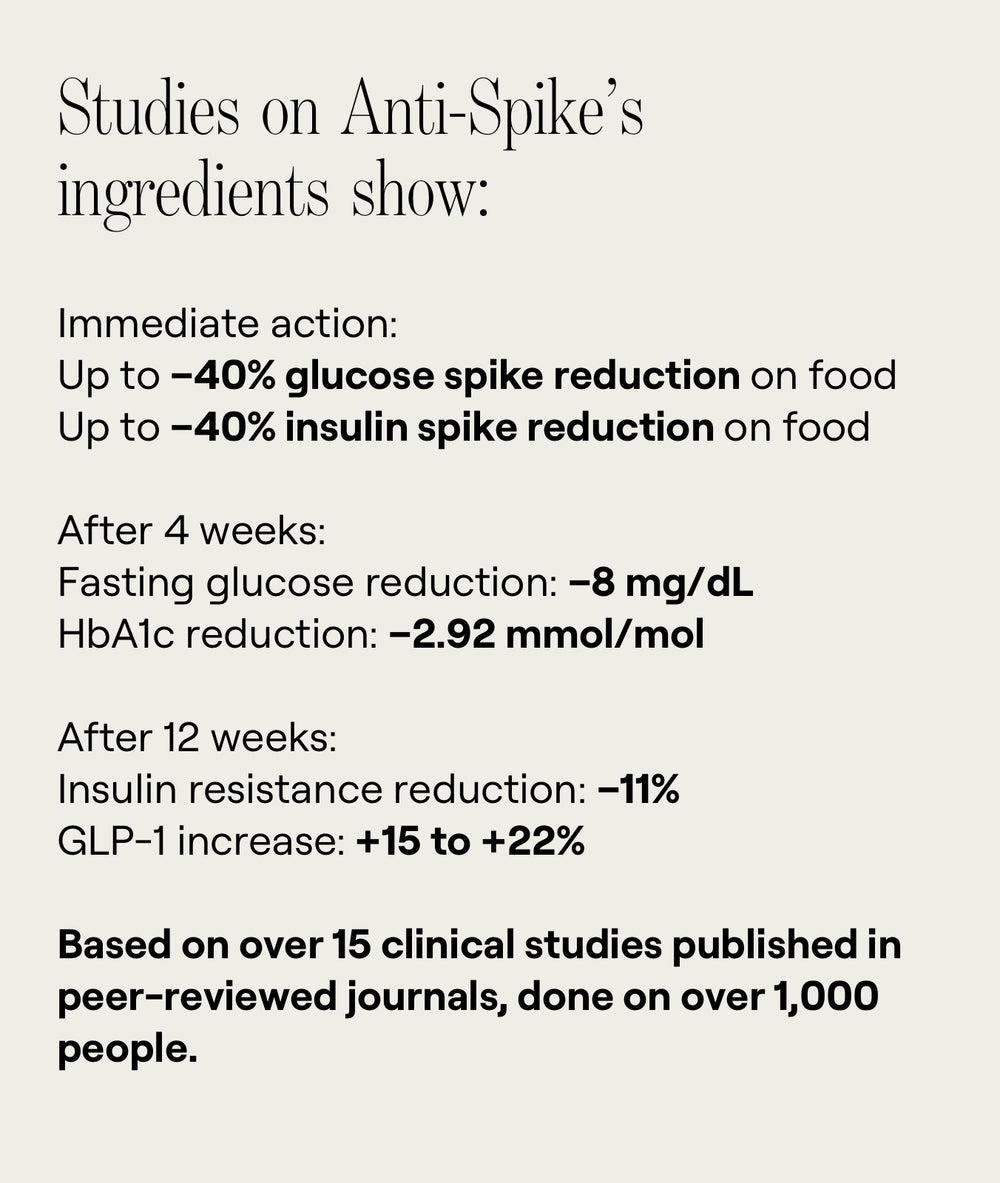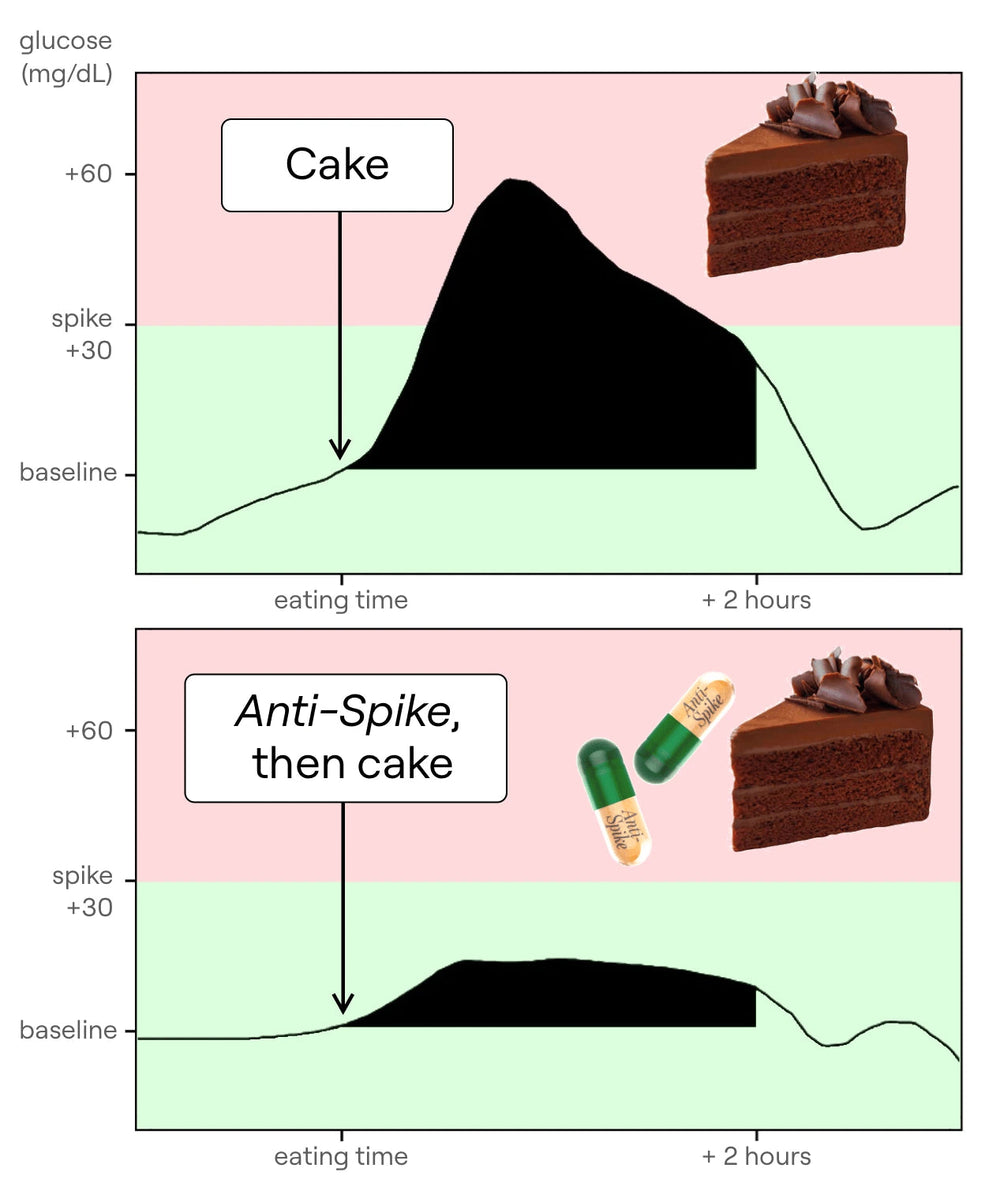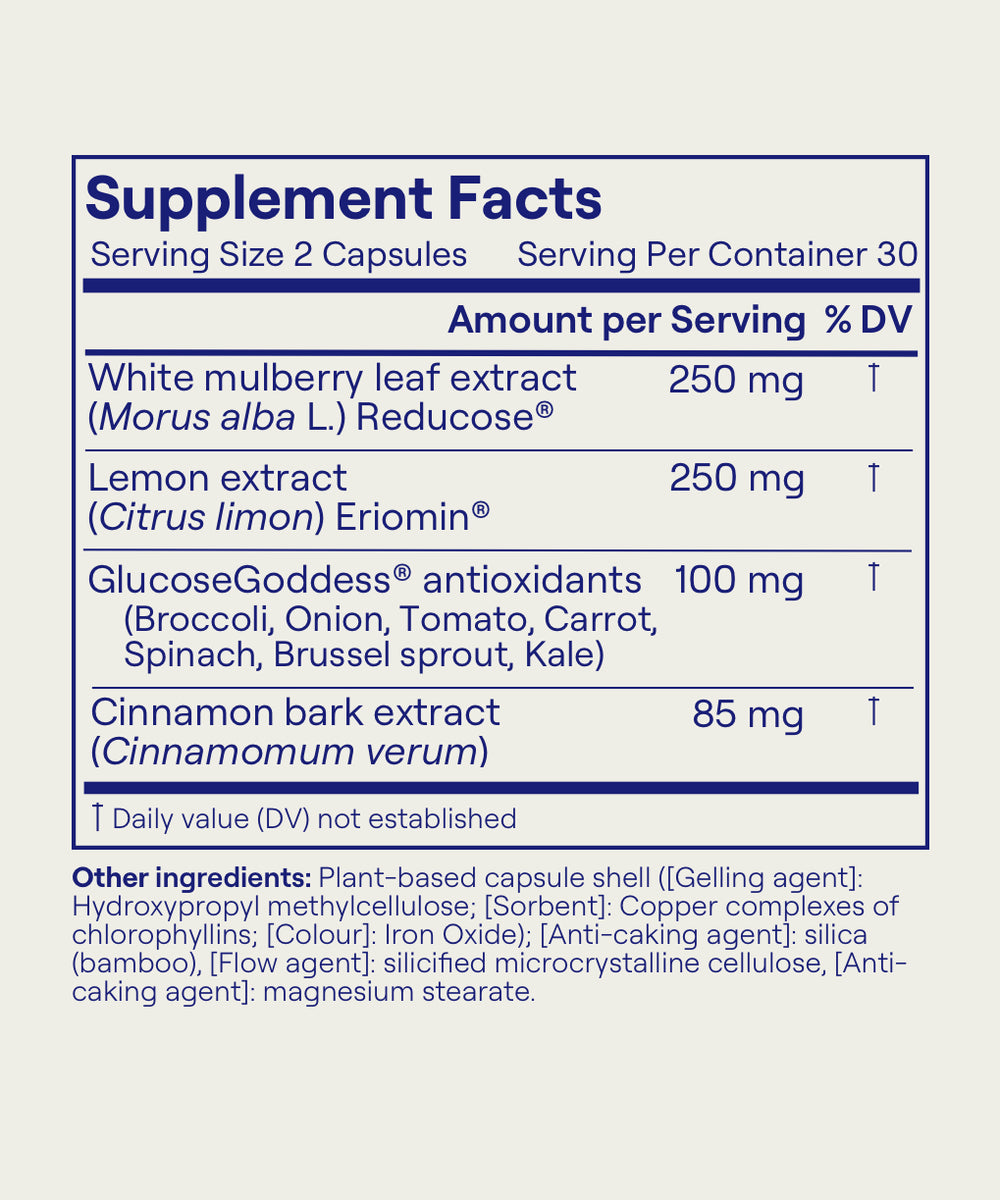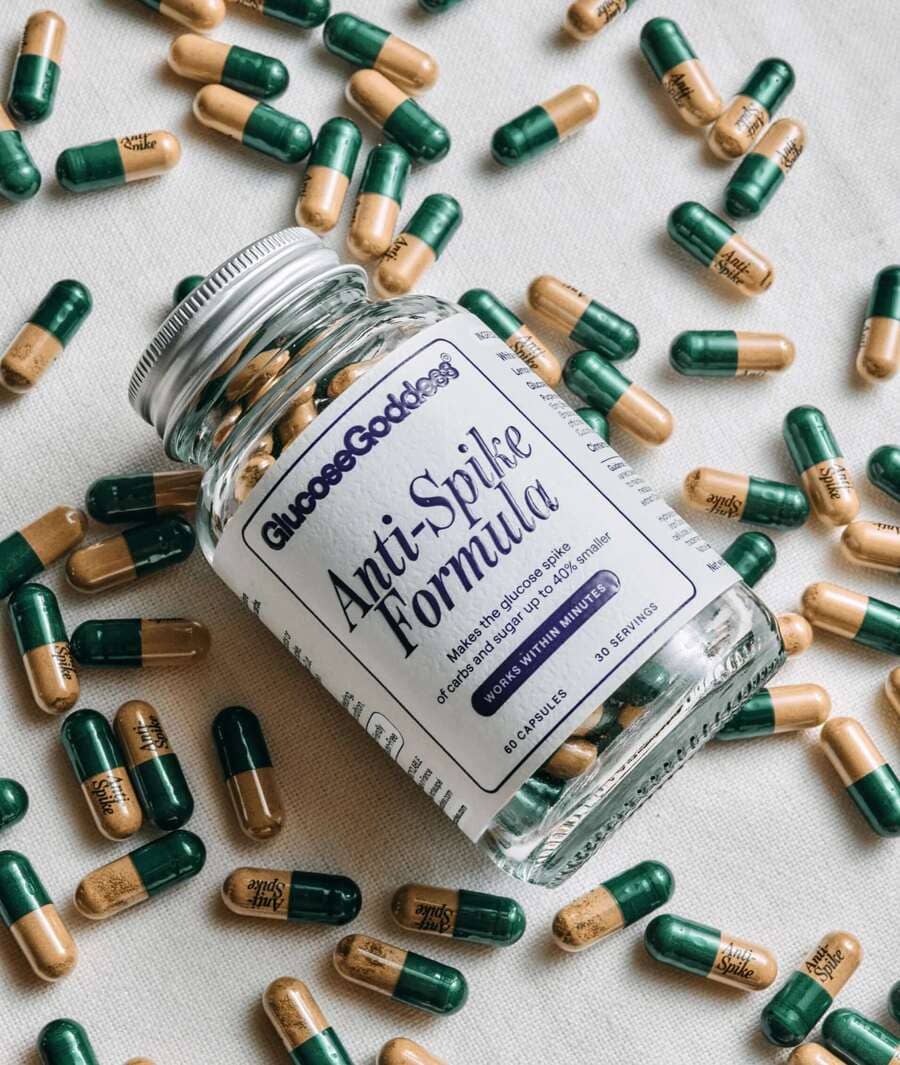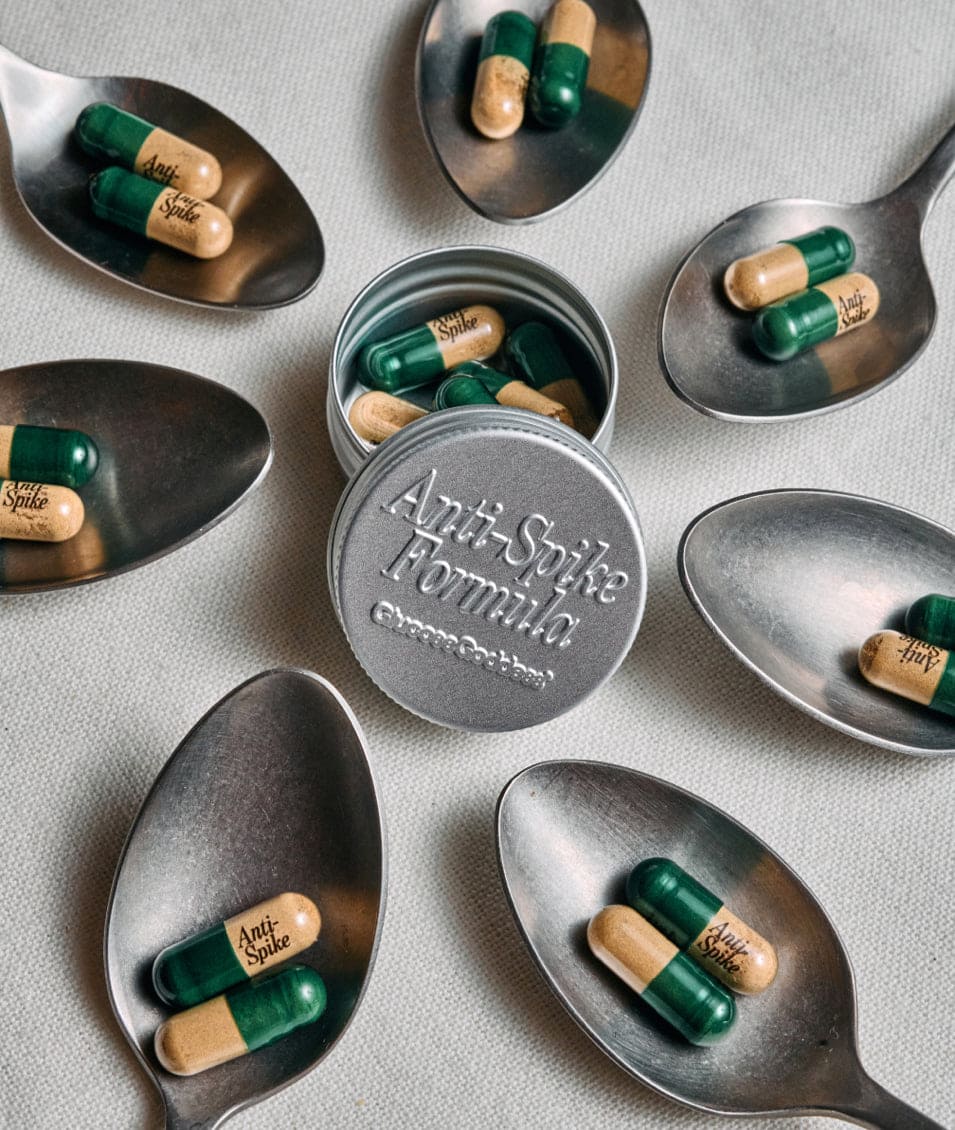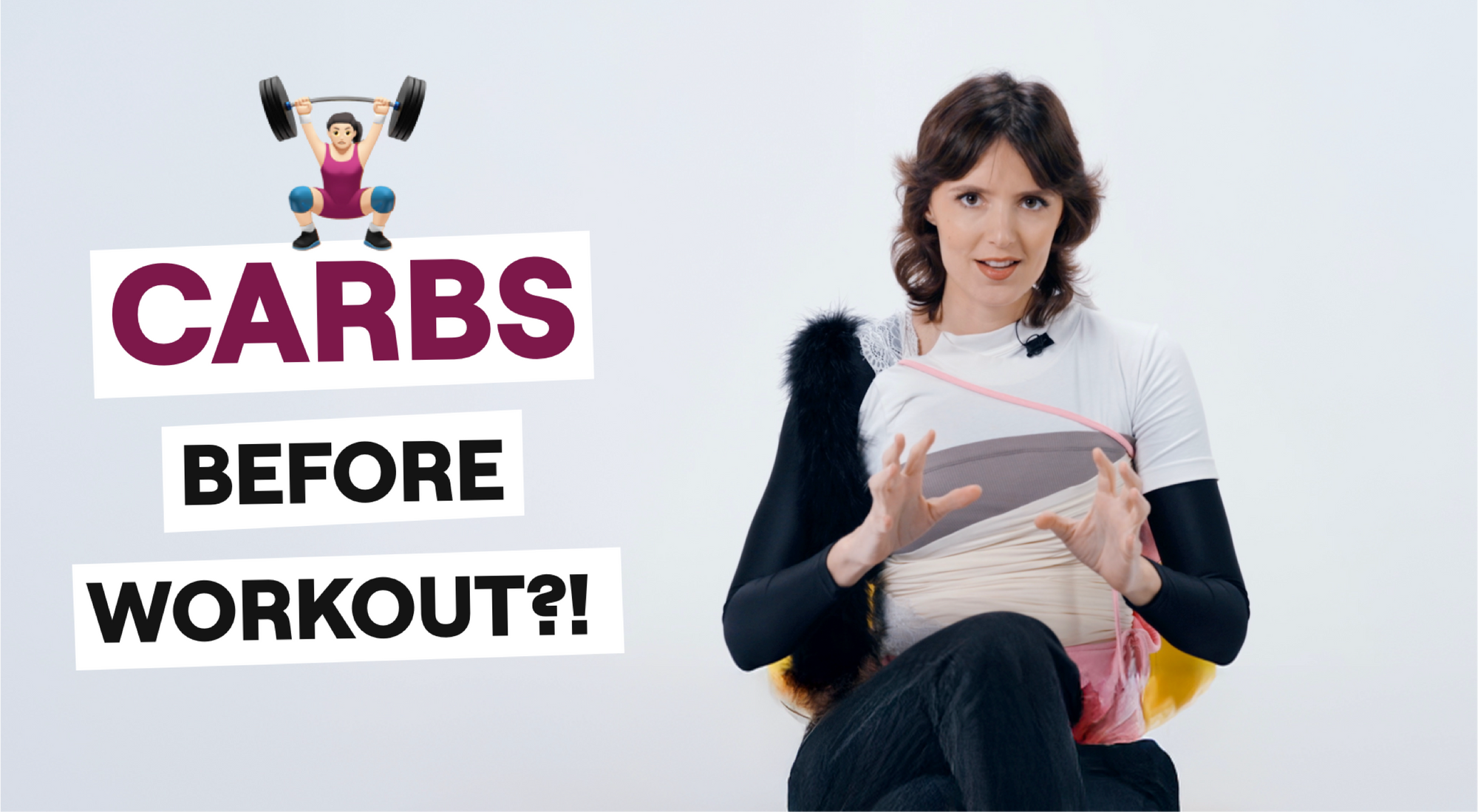SCIENCE EPISODE
Move Like This After Eating (It Changes Everything)
You don't have to go to the gym. You don't have to run a marathon. You don't have to do anything crazy. Four very simple exercises that are going to enable your mitochondria to use glucose from your bloodstream to fuel your muscles. And as a result, they will reduce the glucose spike of a meal.
Hello angels, and welcome back to the Glucose Goddess Show. I'm Jessi Inchauspé, a French biochemist who is obsessed — but like in a healthy obsessed fashion — obsessed with helping you understand your body and your health. And today I've put on my exercise shorts cuz we're going to talk about exercising.
So, I want to teach you four really, really simple movements you can do every single day that are going to transform how you feel because they will lower your glucose spikes. Now, it's up to you if you want to do all four or if you want to choose one. Let's start with one, okay? Pick one and then you can build up. So, I pick one exercise in this episode that you can do every single day starting today. Promise, promise. Pinky promise. Starting today so that you can feel better.
So, let's get into it. First things first, let's have a little quick look at what actually happens when we move our muscles. So, anytime I move a muscle, whether I'm doing this or I'm doing a squat or I'm doing whatever, here's what's going on. Your muscle, here's an example of a muscle. Your muscles contract. This is what creates the movement.
And in order to contract, it is your little factories inside your cells, your mitochondria, that transform things, notably glucose, into energy to fuel your muscles. So muscles have a ton of mitochondria in them who are creating energy for them. The name of the energy created by your mitochondria is called ATP. The harder your muscle is contracting, the more energy it needs. The longer your muscle is contracting, the more energy it needs.
And your mitochondria to create energy, one of the places they will look for the building blocks is in your bloodstream. Your mitochondria will look for glucose or blood sugar in your bloodstream to convert into energy to fuel your working muscles. And we can use this to our advantage.
And today I'm going to show you these four very very simple exercises. You don't have to go to the gym. You don't have to run a marathon. You don't have to do anything crazy. Four very simple exercises that are going to enable your mitochondria to use glucose from your bloodstream to fuel your muscles and as a result they will reduce the glucose spike of a meal.
During a meal if we eat too many carbs and sugars. Carbs are things like bread, pasta, rice, potatoes, oats and sugars are anything sweet from a cookie to an apple. If we eat too many carbs, so too many starches and sugars, that's going to create a big glucose spike in our body. Now, these spikes have damaging consequences. We want to reduce them.
Here's an example. If you have a “pain au chocolat" — I love pains au chocolat — you will create a big glucose spike in your body because a pain au chocolat contains a lot of carbs and sugars. This glucose spike will lead to inflammation, glycation, insulin release, and during the dip after the spike, you might want more sugar because dips after spikes can lead to cravings and hunger. You might feel tired, too.
So, reducing our glucose spikes is really key to feeling our best today and also to help our body prevent long-term chronic diseases. I have a whole episode on how glucose is linked to diseases and people without diabetes. Check it out if you want more.
But today's episode is all about reducing these spikes in very easy ways. So if after you've eaten something high in carbs and sugars, after you've eaten something that would create a glucose spike, if you get in there and before that food has time to create a glucose spike, you activate your muscles.
Your muscles will grab some of the glucose from that meal thanks to your mitochondria and they will turn it into energy to contract instead of letting all that excess glucose create a damaging glucose spike in your body. So that's the whole point of today's episode.
It's about four really easy exercises you can do to reduce the glucose spikes after you eat something high in carbs and sugars.
The first exercise I want to talk about is called the soles push-up or the calf raise. So imagine you're at your desk, you're at work, you're at school, wherever you've eaten something really high in carbs. Here is the easiest and most discreet way you can lower the glucose spike of that meal.
You will simply put your feet on the ground like this and then just go up and down. Try to keep your shoes on. Don't do it like me. So you go, "Oh my god, my shoes are getting off." Anyway, it doesn't matter. You go up and down like this, okay? For five, 10 minutes.
Now, why is this helpful? Because your calves, my dears, contain a muscle called the soleus muscle. The soleus muscle has been shown in studies to be extra good at soaking up glucose in the bloodstream after we eat. The study is called A potent physiological method to magnify and sustain soleus oxidative metabolism improves glucose and lipid regulation.
So in this study the researchers asked participants to do calf push-ups, calf raises for 5 hours. Okay, that's too much. But what they found was that doing 5 hours of calf raises reduced by 52% the post-meal glucose spike and reduced by 60% any extra insulin levels that were there.
Now we don't have to do this for 5 hours. We really don't. But we should know that even doing 10 minutes can have a strong impact. This is my own test. So pain au chocolat versus pain au chocolat and then 10 minutes of calf raises. As you can see, a much smaller glucose spike.
And it's very discreet. It's very, very easy. So, I recommend you test this out. This was my first example of an easy exercise you can do throughout the day to reduce your spikes. You want to do this within like 90 minutes of the end of eating your meal because 90 minutes is about when your glucose levels will peak after eating.
Now, let's talk about a tried and tested very simple exercise that I'm sure that you have probably done before. The exercise is called walking.
So in the study called The effect of a single bout of continuous aerobic exercise on glucose, insulin and glucagon concentrations compared to resting conditions in healthy adults: a systematic review, meta-analysis and meta regression — yes, it is a very long study title with a very simple conclusion — walking after eating reduces the glucose levels in your body.
Which makes sense because as we're walking, our legs, our arms, our torso are contracting to help us walk. And as they are contracting to help us walk, the muscles that are contracting need energy. And the first place these muscles will be looking for energy to give to their mitochondria to create ATP is in our bloodstream.
So, as a result, walking after eating is a very, very easy way to reduce the glucose spike of a meal. How much walking are we talking about? 10 minutes is enough.
Here's a really cool test I did on a poke bowl with a bunch of rice in it and it had this sweet sauce that created a big glucose spike. And then the same poke bowl with 10 minutes of walking. As you can see, it significantly reduces the glucose spike of that meal.
So within an hour and a half after eating, grab a colleague, put a podcast on, whatever, and walk for 10 minutes around the block. It can be up and down the stairs at your office building if you can't go outside, on a treadmill if you want. Just walk for 10 minutes. It'll help you feel much better.
It will curb your cravings and your fatigue for the rest of the day if you had any that were created by glucose spikes and glucose drops.
Now, for a long time, we thought that walking was kind of the best and the easiest thing to do. But a recent study is showing us that this third option I'm about to mention, while it's a little bit weird, is actually very powerful.
The study that is enlightening us today is called Enhanced muscle activity during interrupted sitting improves glycemic control in overweight and obese men. So in this study, the scientists wanted to compare 30 minutes of walking after eating versus doing 10 air squats every 45 minutes for 9 hours.
Again, this is a study situation. We don't necessarily have the ability to do 10 air squats every 45 minutes for 9 hours. But in the interest of science, here is my example of it.
So as you can see here, a big bowl of pasta and then a 30-minute walk and then no movement for 9 hours. My glucose level stayed quite high. We see a bit more roller coaster going on versus that same bowl of pasta with 10 air squats every 45 minutes for 9 hours.
Now, I would never draw conclusions based on my own individual test. That's not what I'm doing here. I'm illustrating what the scientists found on a big cohort of people in their study.
So, it appears, as you can see in my own results, that doing air squats — 10 air squats every 45 minutes for a long time — reduces our glucose levels more efficiently than walking for 30 minutes.
So, if you prefer that, try it out. Every 45 minutes, 10 air squats. You don't have to do nine hours. That's a lot. Maybe even once or twice or three times could be super helpful.
It just shows us that different kinds of exercises that take more or less time and effort have different impacts on our glucose levels. So that was option number three. If you love squats, put a little timer on and after eating do 10 squats, 45 minutes later 10 squats and maybe a third time. Again, you don't have to do it nine times. That's a lot. But a few squats for a couple hours after eating — easy. Check it out. See what you think.
And now my final exercise option, my final suggestion, is extremely easy. So let's say you have an apartment or a house wherever you live. Odds are after you eat or throughout the day you got to tidy things in your house.
A very easy way to get movement in after eating is to do a small house chore. So after eating your meal, your dinner, perhaps within 90 minutes you get up and you tidy your kitchen. Perhaps you have to fold some laundry. Perhaps you have to vacuum your house.
So you grab your vacuum cleaner and you vacuum for 15 minutes like I'm doing in this example. As you can see, a donut on its own, big glucose spike; a donut, and then some vacuuming for 15 minutes — much smaller spike.
Simple exercise snacks, they're called. So simple movements that we do on a day-to-day basis — if we organize them and plan them after a meal high in carbs, it can help our body process the carbs better and reduce the consequences.
So that's number four. Doing a simple house chore, for example, after dinner can be super helpful.
And one more thing I want to mention about why exercising to reduce a glucose spike can be so helpful and such a wonderful thing to do.
Generally, in our body after we experience a big glucose spike, our body tells our pancreas to send out a hormone called insulin. Insulin's job is to grab all the excess glucose in our body and store it away in various storage units to reduce the glucose spike, get our glucose levels to come back down. And that's great. That's normal.
The problem is, over time if your insulin levels increase every single day, multiple times for days, weeks, months, years, over time that accumulation of a lot of insulin can cause its own issues like insulin resistance, like pre-diabetes or type two diabetes.
What's great about moving after eating as a way to reduce your glucose spikes is that your muscles, when they uptake — when they absorb glucose after you eat — they don't need insulin to do so when they're contracting.
So, you're reducing your glucose spike without increasing your insulin levels. And this is so cool and so great because one of the ways that you could reduce somebody's glucose levels would be by just giving them a ton of insulin. But the problem is, as I explained, high insulin levels have their own consequences.
So by using your muscles after eating, you're not only reducing your glucose spike so that you feel better — better energy, fewer cravings, less hunger, less inflammation — you're also helping your body not release too much insulin, which is a very good and healthy thing.
So there we have it. Those were my four examples of really easy exercises you can do every day: the soles push-up like this (the calf raise), the walking, the air squats if you want, or the simple house chore.
Now, moving after eating is just one of my 10 glucose hacks. And if you want to see all of them, which don't require as much physical activity, I promise the other ones are about food, download in the description of this episode my PDF with my 10 core glucose hacks that will help you reduce your glucose spikes, feel amazing today, and help your body and your health in the long term as well.
Thank you for watching. I'll see you next time.
 Anti-Spike Supplement
Anti-Spike Supplement
 The Recipe Club
The Recipe Club
 Course
Course
 50 Breakfast Recipes
50 Breakfast Recipes
 50 Veggie Starter Recipes
50 Veggie Starter Recipes
 20 Vegan Recipes
20 Vegan Recipes
 20 Gluten-Free Recipes
20 Gluten-Free Recipes
 The 10 Glucose Hacks
The 10 Glucose Hacks
 Vinegar
Vinegar
 Alcohol
Alcohol
 Fasting
Fasting
 GLP-1
GLP-1
 What to Eat Before & After Exercise
What to Eat Before & After Exercise
 Protein
Protein
 PCOS
PCOS
 Menopause
Menopause
 My MRI Story
My MRI Story
 Breakfast
Breakfast
 Supplements
Supplements
 Clothes on Carbs
Clothes on Carbs
 Eggs & Cholesterol
Eggs & Cholesterol
 Chocolate
Chocolate
 Food Labels
Food Labels
 Veggie Starters
Veggie Starters
 Move After Eating
Move After Eating
 Why Glucose Matters
Why Glucose Matters
 Glucose Revolution Book
Glucose Revolution Book
 The Glucose Goddess Method Book
The Glucose Goddess Method Book

